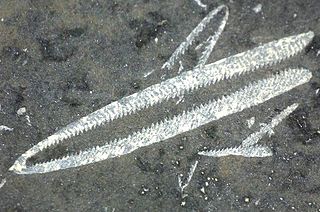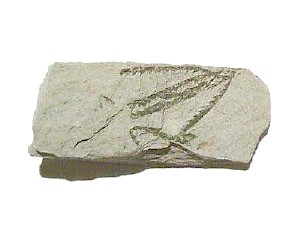 W
WDidymograptus is an extinct genus of graptolites with four rows of cups. They lived during the Middle Ordovician, to Late Ordovician.
 W
WFavosites is an extinct genus of tabulate coral characterized by polygonal closely packed corallites. The walls between corallites are pierced by pores known as mural pores which allowed transfer of nutrients between polyps. Favosites, like many corals, thrived in warm sunlit seas, feeding by filtering microscopic plankton with their stinging tentacles and often forming part of reef complexes. The genus had a worldwide distribution from the Late Ordovician to Late Permian.
 W
WLingulella is a genus of phosphatic-shelled brachiopod. It is known from the Middle Cambrian Burgess Shale (Canada) to the Upper Ordovician Bromide Formation in North America. 346 specimens of Lingulella are known from the Greater Phyllopod bed, where they comprise 0.66% of the community.
 W
WLunataspis is the oldest known xiphosuran. It was first formally described by David Rudkin, Graham Young and Godfrey Nolan, from fossils found in northern Manitoba, Canada in 2005; the deposit dates from the Late Ordovician, c. 445 million years ago.
 W
WNectocotis rusmithi is an Ordovician nectocaridid, differing from Nectocaris in the possession of an internal skeletal element.
 W
WTetragraptus is an extinct genus of graptolites from the Ordovician period.
 W
WTetragraptus approximatus is a species of dichograptid graptolite belonging to the genus Tetragraptus. It existed during the Floian Age of the Ordovician. It is an important index fossil in biostratigraphy.